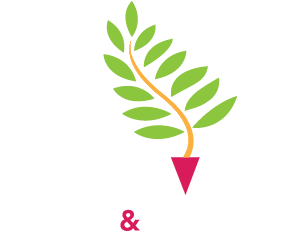How Stew for a Cold Day Became a Lesson in Label Reading
Today the weather in New Bern, N.C., is a bit nasty — rainy and cold.
To beat the dank and dreary day, my mom decided to make some stew, a comfort food she has made for as long as I can remember. It is a delicious dinner that would warm our bodies and our souls — as is only right for a home-cooked meal made by mom.

When I went into the kitchen to make lunch, I noticed she had already cut up the potatoes and carrots and placed them in the slow cooker with the meat. She apparently was about to put the sauce together because a can of tomato soup was on the counter. For some reason, I decided to pick up the can of tomato soup. I turned it over to read the ingredients — a habit I formed after I was diagnosed with an allergy to yeast and began following a gluten-free diet.
I noticed that the third ingredient in the soup is wheat flour, so I immediately yelled out (not annoyed, just to let her know, but apparently in a “tone” guaranteed to frustrate my mom), “Mom the tomato soup contains wheat. We can’t use it.”
She replied, “You’ve never had a problem with the stew before.”
What ensued in the next few minutes was a heated discussion between a mom preparing a meal that had always been fine in the past and daughter who was annoyed by the mere fact that tomato soup has wheat flour in it.
She replied, “You’ve never had a problem with the stew before.”
To be honest, I don’t remember my mom making this stew since I’ve lived with her and dad (18 months), so I don’t remember checking a label. I do remember making it when I lived alone and had to buy the ingredients on my own, which meant I was reading every label before I added an ingredient to my meals. I actually checked online for the tomato soup she usually uses (it was sold out). It too has wheat as the third ingredient.
Having a dietary need, whether it’s a food allergy, a medical condition, religious practice or lifestyle choice, requires diligence in reading labels, calling manufacturers, asking questions and then more questions about the ingredients in the food being prepared and/or served for us. It can (ahem) stew our emotions by having those who are preparing the meals feel like we are criticizing their cooking, the dish, or the meal. We’re not. We WANT to eat the dish — we are hungry and it looks delicious — but before do, we need to check to make sure it is safe for us to eat.
Who would have thought tomato soup would contain wheat?!?
Dietary needs can create a goulash for those of us who order, prepare and serve meals for others as well. Our goal is create and offer a meal everyone can and will enjoy. But it can be hard when some people don’t share their needs until the meal is being prepared or has already been prepared. We have just spent time, money and energy on something that goes unappreciated and gets wasted. It is also steams us that food we buy that we would assume is free from an ingredient — it is tomato soup after all — contains that ingredient.
Food is personal for those preparing it and for those eating it. That makes it even more important to ensure that we understand the needs of both eaters and preparers.
That means checking the label, even when you’re sure that product couldn’t possibly have an allergen in it. After all, who would have thought tomato soup would contain wheat?!? (insert “tone”…)
_____
P.S. We had tomato paste and tomato sauce in the pantry so she substituted that for the soup. It probably was a bit thicker than usual, but it was tasty. And, no one would know the difference in the flavor, but the meal meant so much more to me that she/we figured out how to adjust on the fly to make the stew gluten-free.



